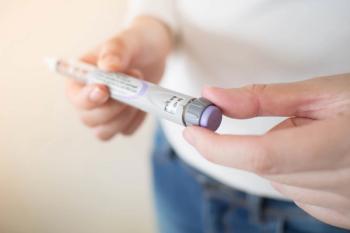
How Pharmacies are Helping Patients with Diabetes
When pharmacists get involved in patient care, significant improvements are often seen. Diabetes management is one of the most notable examples.
When pharmacists get involved in patient care, significant improvements are often seen. Diabetes management is one of the most notable examples. Both studies and real-world examples show that with pharmacist interventions, patients’ blood sugar levels improve; they are more adherent to medications; and, in some cases, they can reduce the number of medications they are taking.
“Pharmacists are definitely playing an important role in healthcare, and making time for counseling patients on diabetes or any health-related issue is critical to supporting our patients,” said Rachel O’Koren, director, clinical programs & quality for Walgreens.
Pharmacists at the 8,177-store chain help diabetic patients understand their medications with programs such as “new-to therapy consultations” and Medication Therapy Management (MTM), which help provide a “real connection between the patient and pharmacist in the management of the patient’s diabetes,” O’Koren said.
“Our goal is to ensure these patients not only know how to take their medications but also how to help them fit their medications into their lives,” she added. For diabetic patients who want a digital connection in their diabetes management, Walgreens provides Pharmacy Chat, and its mobile app includes pill reminder, script tracker, and refill-by-scan options.
Pharmacist intervention in diabetes care is clearly needed. Disease complications account for an estimated 61% to 80% of T2 diabetes-related costs in the U.S., the U.K., Brazil, Germany, Saudi Arabia, and Mexico, according to a recent IMS Institute for Healthcare Informatics report. In addition, between 4% and 15% of costs are linked to poor adherence.
Notably, on average, fewer than 40% of patients with T2D globally are achieving optimal levels of adherence (the extent to which a patient follows the prescribed interval and dose of a medicine regimen) and persistence (the time from initiation to discontinuation of a therapy), according to IMS Institute.
However, if therapy adherence and persistence are addressed, the U.S. Medicare population could save an estimated $4 billion annually in avoidable costs – 4% percent of America’s total healthcare spending, the IMS Institute found.
Already, many independent and chain pharmacists are trying to change diabetes outcomes by becoming diabetes educators and by counseling patients when they come into their stores.
“Pharmacists need to do a lot more to help diabetics. It’s as simple as asking, ‘What is your reading today?’, said Jerry Callahan, owner of six Medicine Shoppe pharmacies in St. Louis, Mo. The Medicine Shoppe chain is owned by Cardinal Health. The pharmacies also have software that tracks patients’ blood glucose readings and other data, so pharmacists can advise them on how they can improve--or give them positive reinforcement when everything is going well, Callahan said.
Taking the pharmacist intervention piece further, Medicine Shoppe pharmacies also recently began offering classes for diabetic patients at its Chesterfield, Mo., store, in partnership with Cardinal Health and Healthy Interactions’ Conversation Map tools. The tools, developed in collaboration with the American Diabetes Association (ADA) and the International Diabetes Federation, are the most deployed diabetes education tools, with more than 80,000 diabetes educators receiving training globally.
At Medicine Shoppe, groups of three to five patients meet for three sessions in “fun and engaging classes that cover topics that make up the comprehensive diabetes self-management education program,” said Amy DeWein, PharmD, clinical pharmacist and diabetes educator at Medicine Shoppe in Chesterfield.
The conversation Map tools are colorful and highly interactive, with game-like activities to improve content retention and understanding, she explained. “These conversations add a really powerful element to forward movement with behavior change. We see the groups really supporting each other, and that goes a long way for motivation,” DeWein said.
In between classes, some participants use Conversation Map’s app to “stay engaged with me for coaching, tips, or to log specific metrics,” DeWein said. “Patients appreciate a pharmacists’ time, with our unique position to focus on the medications to address nonadherence and care gaps, while addressing individual challenges in their diabetes care.”
This type of diabetes education, which helps diabetics take control of managing their disease is “key to deriving greater value from existing diabetes treatments,” according to the IMS report. Other methods to improve adherence include identifying and profiling patients in need of help, improving access to customized education materials, maximizing engagement between healthcare providers and patients, and using digital technology to maintain effective disease self management, the report said.
After surveying 851 patients using the Conversation Maps tools, Healthy Interactions found that clinical outcomes are positive with an almost 1 percentage point reduction in HbA1c levels. “Map tools are highly efficacious in delivering self management-education as evidenced by significant improvement in glycemic control upon completion of the Map sessions,” according to Barbara Eichorst, MS, RD, Vice President of clinical practice at Healthy Interactions.
DeWein is also reaching out to physicians in the community to let them know the pharmacy can support their care plans. “They typically don’t have time for this one-on-one with patients, so this helps to complete the overall team approach,” DeWein said.
Medicine Shoppe’s Chesterfield store recently obtained recognition from the ADA for meeting quality standards for its diabetes education program, which will allow the pharmacies to receive reimbursement from Medicare. “The other stores are working towards ADA recognition as well,” DeWein said.
Meanwhile, Walgreens works with both commercial and government programs on receiving reimbursement for diabetic counseling and education, according to O’Koren. “While being reimbursed directly for this is tied more closely to Medicare MTM programs, there are indirect ways that we are reimbursed for these services-- like adherence outcomes-based reimbursement relationships.”
As Medicine Shoppe works towards reimbursement, the pharmacies benefit by helping current customers – and recruiting new customers to the stores. Creating “Specialized Diabetes Care Centers” within Medicine Shoppe pharmacies supports a business model for gaining new customers and growing overall sales, according to DeWein. “People living with diabetes do depend on supplies, special OTC products, and are often managing comorbidities. . . We want our Centers to be the solution for patients and the health system.”
Data points
. Complications of T2D diabetes account for up to 80% of disease-related costs in the U.S., U.K., Brazil, Germany, Saudi Arabia, and Mexico,
. Up to 15% of costs are linked to poor adherence.
. Fewer than 40% of patients with T2D globally are achieving optimal levels of adherence and persistence.
Newsletter
Pharmacy practice is always changing. Stay ahead of the curve with the Drug Topics newsletter and get the latest drug information, industry trends, and patient care tips.
























































































































